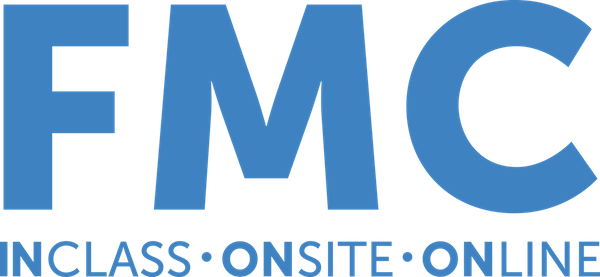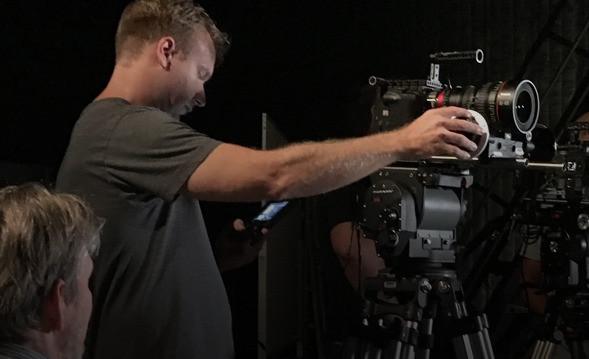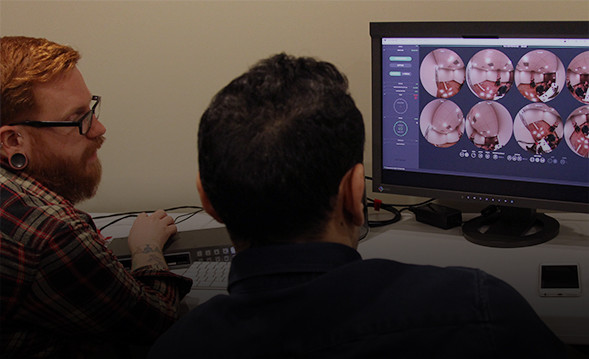Overview
From creation to distribution to consumption, across multiple platforms and countless nationalities, NAB Show is where global visionaries convene to bring content to life in new and exciting ways. No one knows media, entertainment or technology like us and this is THE annual event for those serious about storytelling.
We're excited to announce that this year at NAB, we've partnered with Future Media Concepts (FMC) on two workshops that are part of Post Production World's official training tracks. Post|Production World (P|PW) is the world's leading training event for content creators and designers including TV, film and video editors, producers, directors, graphic artists, motion graphics designers and new media specialists.
DP Track: Advanced Techniques: Cameras, Crews, and On-Set Workflows
Saturday, April 6
9:30 AM - 7:15 PM
Location: S227
Instructor: Ian McCausland
Expand your knowledge to successfully handle larger, professional productions with bigger camera setups in this full day immersive curriculum. You will learn everything from setting up your camera (from studio to handheld rigs), the roles of crew members on a professional set, troubleshooting in the field, and the technical terms necessary to work on any size project, empowered with a new level of professionalism. In addition, the class discusses the best ways to tackle the most common questions regarding technical specs prior to your shoot.
During the Assistant Camera portion of this class, AbelCine instructors will build multiple camera setups from the ground up. This will demonstrate the ideal configuration needed, how to troubleshoot in the field, plus how to maximize your camera system for speed and efficiency.
- On Set Roles and positions: How to run your set like the top crews
*Overview of camera department job roles and definitions and how to incorporate into any set
- Technical Terms Overview and Latest Camera Workflows
*Overview of Key Technical Terms for production and their application in today's industry
- On Set Terms and Set Etiquette
*Be able to work on a large set or bring large set etiquette to your production to increase your professionalism and clients perception
- AC 101: Building The Camera
*Covering all aspects of a professional camera prep, and what an AC needs when building a camera from the ground up
- AC 201: Advanced builds and wireless capabilities
*Advanced configurations including wireless video, focus, and camera control and how to maximize your set up for speed
- On-Set Media Management
*Data Management workflows and best practices
- DIT and LUTS Overview
*The gear and steps needed to create a LUT on any size set and save time in post
- Practical Example
*Watch it all come together!
Directing Movement Field Workshop
Sunday, April 7
9:30 AM - 6:00 PM
Location: 3460 Caravetta Court, "The Space"
Instructor: Nic Somera & Rey Reyes
As filmmaking cameras have evolved over the decades they have advanced from mechanically complex heavy weights housed in immobile booths, to light weight ultraportable devices barely larger than a still photo camera, or arguably, the phone in your pocket. With so much cinematic power packed into such a small package, the ability to express the story through camera movement is an expectation now, rather than a desire. But with all the myriad ways to move the camera, it is easy for the art of storytelling to become lost in the simple search to add production value.
Join us as we explore the “why” of camera movement and stabilization with legendary camera operators and inventors Garrett Brown and Jerry Holway. This field workshop will focus on the effects that various kinds of camera movement have on narrative storytelling and cinematic grammar. Attendees will learn a greater understanding of human perception as it relates to movement, the various techniques and equipment used to move the camera effectively, and experience live demonstrations with professional operators. Upon completion, attendees will be able to speak a common language of movement, allowing them to not only creating moving shots with more meaning and emotion, but to collaborate with camera operators, cinematographers, and directors to more effectively realize their cinematic vision.


















